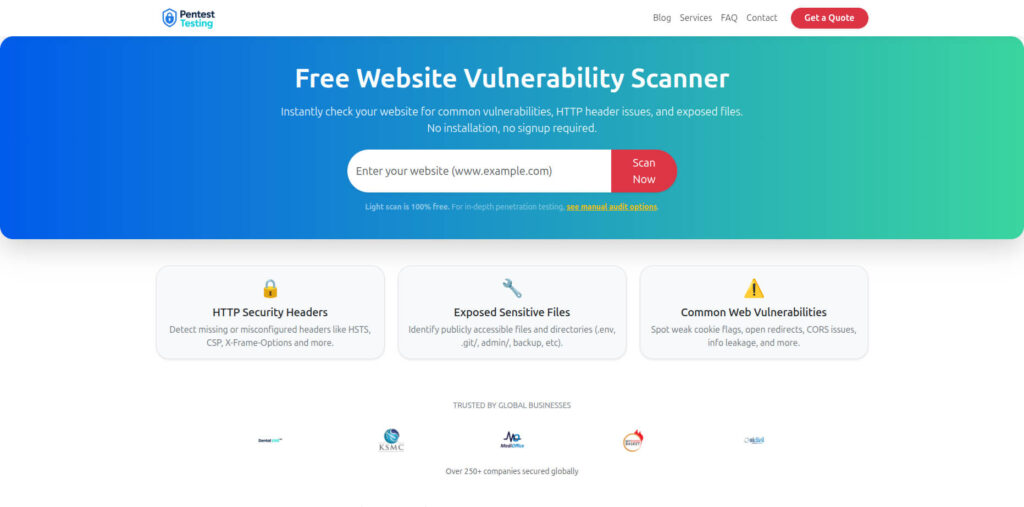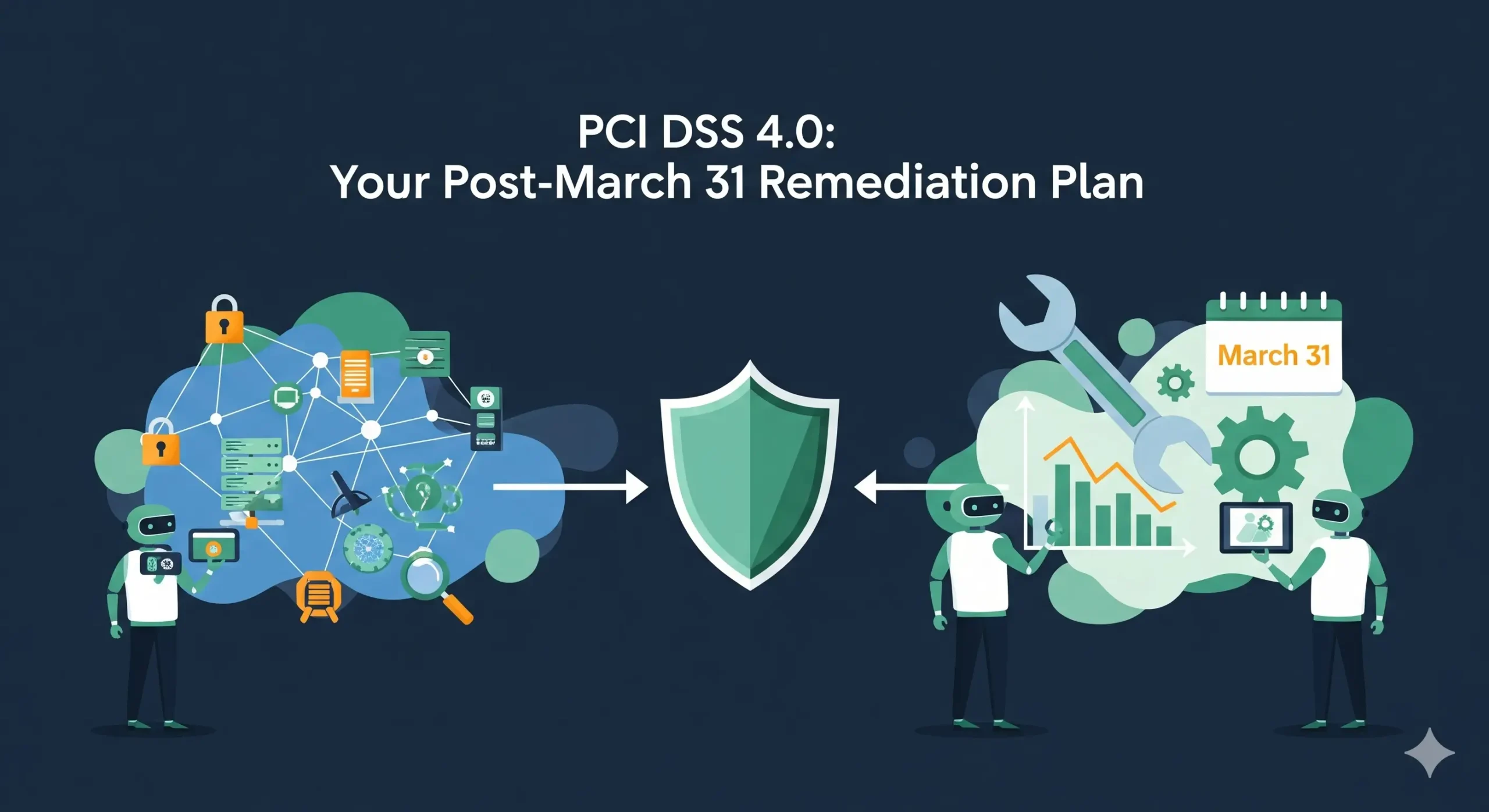60-Day Sprint to Shrink Your Supply-Chain Attack Surface
Why your Supply-Chain Attack Surface matters right now
In 2025, supply-chain and vendor-driven breaches are no longer edge cases. Recent research shows:
- 88% of organizations are worried about supply chain cyber risk, and over 70% experienced a significant third-party cyber incident in the last year.
- Fewer than half monitor even 50% of their extended supply chain for cyber threats.
- Supply chain cybersecurity is now at the “Peak of Inflated Expectations” in Gartner’s hype cycle—boards are asking hard questions, but many programmes are still immature.
- External attack surface reports highlight that cloud apps, contractors, and third-party assets now represent a large share of exposed entry points.
Your Supply-Chain Attack Surface is the sum of all ways an attacker can reach you through suppliers, SaaS, MSPs, and downstream sub-processors—not just your own infrastructure.

This guide gives you a practical 60-day remediation sprint you can layer on top of your existing risk programme:
- Map first-, second and third-party vendors and their dependencies
- Run a fast risk assessment for access, privilege, and software supply-chain dependencies
- Build an audit-ready evidence pack (contracts, attestation, patch history)
- Execute a 60-day remediation sprint with weekly deliverables
- Produce dashboards, vendor evidence, and a remediation ticket log ready for SOC 2 / ISO 27001 / NIS2 / DORA conversations
Throughout, we’ll use real-world code snippets you can adapt in your own repo.
Looking for a practical way to prioritize and track fixes across HIPAA, PCI DSS, SOC 2, ISO 27001, and GDPR? Our latest post walks through a complete risk register remediation plan: https://www.pentesttesting.com/risk-register-remediation-plan/
1. Define the Supply-Chain Attack Surface: first-, second- and third-party
Start by defining what’s in scope. At minimum:
- First-party: Your own infrastructure, apps, and internal teams.
- Second-party: Direct vendors you have a contract with (SaaS, MSPs, integrators, cloud, payment processors).
- Third-party / Nth-party: Your vendors’ vendors—CDNs, subcontractors, external dev teams, embedded SDKs, AI/LLM providers, NPM/PyPI packages, etc.
In practice, you’ll never see 100% of the chain, but you can build a defensible, risk-focused map quickly.
1.1. Minimal vendor inventory schema (YAML)
Create a simple vendors.yaml checked into a private repo:
# vendors.yaml
vendors:
- id: "crm-saas-01"
name: "ACME CRM"
tier: "second-party"
category: "SaaS"
data_classes: ["customer_pii", "billing"]
network_access: ["vpn-prod", "sftp-ingest"]
app_integration: ["public-api", "webhook"]
country: "US"
criticality: "high"
domains: ["crm.example.com"]
- id: "email-marketing-01"
name: "MailBlast"
tier: "second-party"
category: "marketing"
data_classes: ["email_only"]
network_access: []
app_integration: ["api-outbound"]
country: "EU"
criticality: "medium"
domains: ["mailblast.example.net"]
- id: "pdf-sdk-01"
name: "DocRender SDK"
tier: "third-party"
category: "embedded-sdk"
data_classes: ["generated_docs"]
network_access: []
app_integration: ["npm-package"]
country: "US"
criticality: "high"
repo_refs: ["github.com/yourorg/app-frontend"]1.2. Quick Python helper: tag vendor risk level
Drop this into scripts/vendor_risk_baseline.py:
import yaml
from pathlib import Path
RISK_WEIGHTS = {
"data_classes": {
"customer_pii": 3,
"billing": 3,
"health": 4,
"email_only": 1,
},
"network_access": 2, # per entry
"app_integration": 1, # per entry
}
def score_vendor(v):
score = 0
for dc in v.get("data_classes", []):
score += RISK_WEIGHTS["data_classes"].get(dc, 1)
score += len(v.get("network_access", [])) * RISK_WEIGHTS["network_access"]
score += len(v.get("app_integration", [])) * RISK_WEIGHTS["app_integration"]
if v.get("tier") == "third-party":
score += 2 # extra weight for deeper supply chain
return score
def main():
data = yaml.safe_load(Path("vendors.yaml").read_text())
for v in data["vendors"]:
v["risk_score"] = score_vendor(v)
# Print a quick high-risk shortlist
high_risk = sorted(
[v for v in data["vendors"] if v["risk_score"] >= 7],
key=lambda x: x["risk_score"],
reverse=True,
)
print("High-risk vendors:")
for v in high_risk:
print(f"- {v['id']} ({v['name']}): score={v['risk_score']}")
if __name__ == "__main__":
main()This gives you a defensible shortlist of high-risk vendors to prioritize in the 60-day sprint.
2. Run a quick risk assessment: access, privilege, dependencies
Now you have a list; the next step is to quantify exposure based on:
- Access: Does the vendor connect directly into your network, VPN, or admin interfaces?
- Privilege: What can they actually change—production data, config, CI/CD, IAM?
- Dependencies: Is the risk amplified via shared libraries, build pipelines, firmware, or AI/LLM integrations?
This should feed directly into your formal risk registers and any audit-facing material. For detailed risk-assessment methodology and mapping to HIPAA / PCI DSS / SOC 2 / ISO 27001 / GDPR, see Pentest Testing Corp’s Risk Assessment Services.
2.1. JSON risk profile per vendor
Generate a risk_profile.json for each high-risk vendor. Example:
{
"vendor_id": "crm-saas-01",
"business_owner": "[email protected]",
"criticality": "high",
"attack_surface": {
"data_classes": ["customer_pii", "billing"],
"network_access": ["vpn-prod"],
"app_integration": ["public-api", "webhook"],
"admin_interfaces": ["web-console-sso"]
},
"controls": {
"mfa": true,
"sso": true,
"ip_allowlist": false,
"logging": {
"api_calls": true,
"admin_actions": true,
"export_jobs": true
}
},
"software_supply_chain": {
"sbom_available": false,
"ci_cd_access": "read-only",
"notarised_builds": false
},
"ra_status": "in_progress",
"next_review": "2025-12-15"
}2.2. Python: generate a priority queue for the 60-day sprint
import json
import glob
def calc_priority(profile):
score = 0
if profile["criticality"] == "high":
score += 3
if profile["attack_surface"]["network_access"]:
score += 2
if not profile["software_supply_chain"]["sbom_available"]:
score += 2
if not profile["controls"]["ip_allowlist"]:
score += 1
return score
def main():
queue = []
for path in glob.glob("profiles/*.json"):
p = json.loads(open(path).read())
queue.append({
"vendor_id": p["vendor_id"],
"priority_score": calc_priority(p),
"ra_status": p["ra_status"]
})
for item in sorted(queue, key=lambda x: x["priority_score"], reverse=True):
print(item)
if __name__ == "__main__":
main()This becomes your working queue for the remediation sprint (we’ll map it to weeks in Section 5).
3. Evidence collection: contracts, attestation, change-logs, patch history
Auditors and customers increasingly expect evidence, not just questionnaires. Your Supply-Chain Attack Surface programme should produce:
- Vendor contracts + DPAs with security and audit rights clauses
- Latest SOC 2 / ISO 27001 / PCI DSS / HIPAA attestation, where available
- Change-logs and patch history for critical vendors and key components
- Proof of external exposure testing (scans, pentests, retests)
3.1. Evidence pack folder layout
Standardize an on-disk structure you can zip and hand to auditors:
supply-chain-evidence/
00-index.md
contracts/
crm-saas-01-master-services-agreement.pdf
mailblast-dpa.pdf
attestations/
crm-saas-01-soc2-type2-2025.pdf
scans/
external/
crm-saas-01-2025-11-free-scan.pdf
portal-main-2025-11-free-scan.pdf
patches/
crm-saas-01-patch-history.csv
tickets/
JIRA-BOARD-export-2025-11.csv3.2. Python: generate a machine-readable evidence index
import os
import hashlib
import json
from pathlib import Path
ROOT = Path("supply-chain-evidence")
def sha256(path: Path) -> str:
h = hashlib.sha256()
with path.open("rb") as f:
for chunk in iter(lambda: f.read(8192), b""):
h.update(chunk)
return h.hexdigest()
def main():
index = []
for dirpath, _, filenames in os.walk(ROOT):
for name in filenames:
path = Path(dirpath) / name
rel = path.relative_to(ROOT).as_posix()
index.append({
"path": rel,
"sha256": sha256(path)
})
(ROOT / "evidence_index.json").write_text(json.dumps(index, indent=2))
print(f"Wrote {len(index)} evidence entries.")
if __name__ == "__main__":
main()That evidence_index.json is powerful during due diligence, NIS2 incident reporting, and M&A—it proves you know where your artifacts are, and that they haven’t been tampered with.
4. Remediation plan: segmentation, least privilege, logging, contracts
Once you understand the Supply-Chain Attack Surface, you need concrete fixes.
Key patterns:
- Vendor segmentation – separate VLANs, VPCs, or projects for vendor-managed access.
- Least privilege – vendor accounts scoped to the minimum required roles and environments.
- Mandatory logging & monitoring – tagged vendor sessions and integrations in SIEM.
- Contract updates – explicit requirements for logging, notification SLAs, and independent testing.
4.1. Example: Zero-trust style segmentation (YAML policy sketch)
# ztna_policies.yaml
policies:
- id: "vendor-crm-admin"
subjects: ["vendor:crm-saas-01-admins"]
resources: ["app:crm-prod-console"]
conditions:
network: ["vpn-vendor-segment"]
time_ranges: ["Mon-Fri 07:00-19:00"]
mfa_required: true
actions: ["read", "write"]
- id: "vendor-support-readonly"
subjects: ["vendor:crm-saas-01-support"]
resources: ["db:crm-replica"]
conditions:
network: ["vpn-vendor-segment"]
mfa_required: true
actions: ["read"]4.2. Example: SIEM query to track vendor accounts
Splunk SPL:
index=auth_logs
| lookup vendor_accounts.csv account_name OUTPUT vendor_id
| where isnotnull(vendor_id)
| stats count as logins, dc(src_ip) as distinct_ips by vendor_id, account_name, src_country
| sort - loginsThis gives you a vendor access dashboard you can screenshot for auditors and management.
4.3. Where remediation help fits
If you want technical and policy fixes to be implemented and evidenced, Pentest Testing Corp’s
Remediation Services are built exactly for this kind of gap-closure work (encryption, logging, segmentation, access controls, and documentation aligned to HIPAA, PCI DSS, SOC 2, ISO 27001 and GDPR).
5. 60-Day sprint plan: weekly tasks & deliverables
Here’s how to break the Supply-Chain Attack Surface remediation into a 60-day sprint.
Weeks 1–2: Discover & prioritize
Goals:
- Complete baseline
vendors.yamlfor critical business functions - Run quick risk scoring and build the high-risk vendor list
- Trigger external exposure scans for key domains using our free tool (Section 6)
Deliverables:
- Version-controlled
vendors.yamlandprofiles/*.json - Sprint backlog created in Jira / Azure DevOps / Linear
Weeks 3–4: Fix access and logging
Goals:
- Implement vendor segmentation and least-privilege roles
- Turn on or tighten MFA, SSO, and IP allowlists where possible
- Route vendor authentication and API logs into SIEM with vendor tags
Deliverables:
- Approved change tickets for firewall / ZTNA / IAM
- Verified dashboards for vendor logins and API usage
Weeks 5–6: Close gaps & build audit pack
Goals:
- Close or accept top risks; document compensating controls
- Capture before/after evidence (screens, scans, ticket logs)
- Assemble the Supply-Chain Attack Surface evidence pack
Deliverables:
supply-chain-evidence/folder with index & hashes- Updated risk register entries pointing to evidence paths
- Sign-off memo for leadership/audit committee
5.1. Backlog as code (YAML)
# supply_chain_sprint.yaml
sprint_goal: "Shrink Supply-Chain Attack Surface in 60 days"
weeks:
- week: 1
focus: "Inventory & scoping"
tasks:
- "Complete vendors.yaml for top 20 vendors"
- "Generate risk scores and select top 10"
- "Run free external scans for vendor domains"
- week: 2
focus: "Evidence & contracts"
tasks:
- "Collect contracts and DPAs for top 10 vendors"
- "Request latest SOC2/ISO reports"
- "Create evidence folder structure and index script"
- week: 3
focus: "Access control"
tasks:
- "Review vendor VPN/IAM roles"
- "Implement ZTNA policies for high-risk vendors"
- "Enable MFA and SSO for all vendor accounts"
- week: 4
focus: "Logging & monitoring"
tasks:
- "Tag vendor accounts in directory"
- "Onboard vendor logs into SIEM"
- "Build vendor access dashboard"
- week: 5
focus: "Patch & configuration hygiene"
tasks:
- "Review patch history and update cadence"
- "Validate SBOM/CI requirements for critical software vendors"
- "Re-run external scans to confirm fixes"
- week: 6
focus: "Audit-ready evidence"
tasks:
- "Generate evidence_index.json with hashes"
- "Update risk register with residual risks"
- "Prepare executive summary and sign-off"You can store this next to your risk register and reuse it as a standard playbook.
6. Use the Free Website Vulnerability Scanner for quick exposure checks
Before (and after) you change anything, run a light outside-in check. Pentest Testing Corp’s
Free Website Vulnerability Scanner at free.pentesttesting.com is built to quickly surface:
- Missing security headers
- Common web vulnerabilities (XSS, open redirects, misconfigurations, etc.)
- Basic TLS and configuration issues
You can use it against your own domains and select high-risk vendor-exposed portals (where contracts allow).
6.1. The free tools screenshot
The screenshot below shows our Free Tools portal, where you can launch multiple website security checks from a single page. From here, teams can run quick vulnerability scans, header checks, and other external tests without installing anything—ideal for kicking off a Supply-Chain Attack Surface review.

6.2. Sample report screenshot to check Website Vulnerability
This sample report is exactly what your team receives after a scan: a concise list of detected vulnerabilities, affected URLs, and recommended fixes. You can drop these PDFs straight into your evidence pack or ticketing system to track remediation and demonstrate continuous monitoring of your supply-chain exposure.

6.3. Bash: batch-scan vendor domains via the free tool (conceptual)
If your legal/contract position allows, you can script scans for vendor-exposed portals. Example skeleton (adapt to the tool’s API/flow):
#!/usr/bin/env bash
# vendor_scan.sh
INPUT="vendor_domains.txt"
while read -r domain; do
echo "[*] Scanning $domain"
curl -s "https://free.pentesttesting.com/scan?target=$domain" \
-H "User-Agent: supply-chain-sprint/1.0" \
-o "scans/${domain}-$(date +%F).html"
sleep 5 # be gentle; avoid rate limits
done < "$INPUT"vendor_domains.txt can be generated from your vendors.yaml file.
For an example of how we already use the Free Website Vulnerability Scanner in compliance-oriented projects, see our EU-focused article
EU Data Act Remediation: 60-Day Rapid Plan.
7. Audit-ready outputs: dashboards, evidence packs, and ticket logs
By the end of the 60 days, you want artifacts you can show to:
- Customers during security reviews and RFPs
- Auditors (SOC 2, ISO 27001, PCI DSS, HIPAA, GDPR)
- Regulators and supervisors (NIS2, DORA, EU Data Act, sector regulators)
7.1. Minimal JSON “Supply-Chain Attack Surface” dashboard data
{
"summary": {
"total_vendors": 42,
"high_risk_vendors": 9,
"external_scans_completed": 18,
"findings_open": 27,
"findings_closed": 49
},
"top_vendors": [
{"vendor_id": "crm-saas-01", "risk_score": 9, "findings_open": 5},
{"vendor_id": "pdf-sdk-01", "risk_score": 8, "findings_open": 4},
{"vendor_id": "email-marketing-01", "risk_score": 7, "findings_open": 1}
]
}You can feed this into your BI tool, or quickly render graphs for a board deck.
7.2. Tie-ins with other Pentest Testing Corp playbooks
This Supply-Chain Attack Surface sprint plugs neatly into other guides on the
Pentest Testing Corp Blog:
- NIS2 Reporting Drill: 24h/72h/1-Month Proven Evidence Kit – for incident evidence and reporting pipelines.
https://www.pentesttesting.com/nis2-reporting-drill/ - EU Data Act Remediation: 60-Day Rapid Plan – for data-sharing APIs and cloud switching obligations.
https://www.pentesttesting.com/eu-data-act-remediation/ - 7 Proven Steps to a Unified Risk Register in 30 Days – for consolidating vendor, internal, and regulatory risks into a single view.
https://www.pentesttesting.com/unified-risk-register-in-30-days/ - 7 Proven Patch/Update Fixes for NIST SP 800-53 5.2 – for strengthening patch and update integrity (core to software supply-chain resilience).
https://www.pentesttesting.com/nist-sp-800-53-5-2/
Together, these give you a coherent roadmap from exposure discovery to remediation evidence.
8. Common pitfalls when shrinking the Supply-Chain Attack Surface
Even mature teams hit the same obstacles:
- Opaque vendors
- Challenge: Limited transparency on security posture, SBOM, or incident handling.
- Fix: Embed clearer security clauses and audit rights in contracts; require SBOM and regular external testing evidence.
- Undocumented dependencies
- Challenge: Shadow IT, forgotten SaaS, or unmanaged open-source components.
- Fix: Use discovery scans and internal surveys; align with a unified risk register (see the 30-day risk-register playbook above).
- One-off questionnaires only
- Challenge: Annual spreadsheets with no follow-through.
- Fix: Pair questionnaires with external scans, log-based monitoring, and periodic penetration testing of key workflows.
- No link between findings and tickets
- Challenge: Reports sit in shared drives with no owner.
- Fix: Require every finding to be mapped to a ticket, SLA, and evidence of closure.
- Ignoring fourth- and nth-party concentration risk
- Challenge: Multiple critical vendors relying on the same cloud or sub-processor.
- Fix: Track concentration in your vendor inventory and consider diversification or architectural mitigations.
9. How Pentest Testing Corp can support your 60-day sprint
Pentest Testing Corp can sit alongside your internal teams to:
- Run external and application-level testing focused on high-risk vendors and integration points
- Map findings to frameworks (SOC 2, ISO 27001, NIS2, DORA, PCI DSS, HIPAA, GDPR)
- Build and execute a remediation roadmap with clear, testable controls
- Provide retests and evidence you can reuse for multiple audits and customer questionnaires
You can explore:
- Risk Assessment Services – to baseline where your Supply-Chain Attack Surface stands today.
- Remediation Services – to convert findings into fixes with policy, technical controls, and audit-ready evidence.
For more insights and step-by-step playbooks, visit the Pentest Testing Corp blog.
From there, you can layer in formal risk assessments, targeted pentests, and remediation support as needed to shrink your Supply-Chain Attack Surface in a measurable, audit-ready way.
🔐 Frequently Asked Questions (FAQs)
Find answers to commonly asked questions about Supply-Chain Attack Surface & 60-Day Remediation Sprint.

